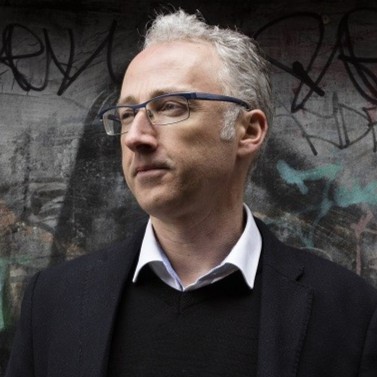Stephen McAreavey
How do you describe Digital Asset Management to others?
For those who have no experience with DAM, I would say it’s the process of collecting and storing all your digital documents in a secure and centralised location. DAM platforms enable users to tag, categorise, and easily locate their assets, as well as promoting safe online sharing, digital collaboration, and the unlocking of value from precious digital data. I want those who are unfamiliar with DAM to realise its potential in helping to achieve business goals (such as collaboration and increasing asset value) whilst also promoting security.
When I’m speaking to individuals who might have a bit more experience with DAM, I like to dig deeper into its specific use cases which can completely transcend industries—anyone can make use of a DAM platform! Whether that’s museums making educational resources available online to students and researchers, or enabling medical professionals to securely share highly-confidential scans or images. The uses and benefits of DAM go far beyond the storing of digital content, and that’s what I aim to get across to people.
What’s the most important thing for someone new to DAM to understand about DAM?
Although DAM platforms are a huge part of the efficient management of digital assets, they cannot work magic, so a certain amount of preparation is needed before implementing your own platform. I think that’s important for people to understand.
Anyone unfamiliar with DAM should first take the time to understand the assets they want to manage—the more efficiently you can plan at this stage, the more value you can squeeze out from your assets. Consider where your assets are currently. Are they on network drives? In cloud storage? Are you working with physical media? You will have to make provisions to digitise your assets before they can be stored in a DAM platform.
Next, understand what you want to get out of your DAM platform, ask yourself; Who’s going to use these assets? What will they be searching for? Thinking practically about how users will interact with the platform will help you determine the best way to classify and label your content for ease-of-use.
It’s also important to consider the practicalities of your DAM. This includes questions around the security of your platform, who has access to what, and any integrations you might require with other systems, such as catalogue managers.
People starting their digital asset management journey should understand that it’s these little considerations which help you truly get the value of your assets, and that turn a simple storage system into an integral part of your organisation’s operation.
What is your vision for DAM? What will it look like in 5 years?
I think DAM will play an important role in heritage and cultural institutions in the next few years, especially in light of events which often mean travel to physical museums and galleries isn’t possible. So many modern DAM platforms enable users to create unique, branded portals for the public sharing of digital assets, I think these features will be instrumental in widening the reach of important collections globally. I’d love to see more institutions utilising DAM capabilities in the next 5 years to create these digital experiences for a wide audience.
What was your biggest success with regard to DAM?
We were extremely fortunate to work with the team at Royal Botanic Gardens, Kew to implement a DAM system for their scientific collections. Kew were instrumental in the development of plant classification systems, so to be able to work with them on their DAM platform was a great honour. It was amazing to play even a small part in the development of the relationship between plant taxonomy and digital asset management.
If you weren’t doing DAM as a career, what would you be doing?
If I didn’t work in DAM, I’d love to be a watchmaker. I think building the mechanisms from scratch would be a very satisfying process, and I enjoy how it involves equal parts creativity and engineering. A bit like DAM I suppose!
Stephen McAreavey is Commercial Director at Aetopia.
Share this Article:

